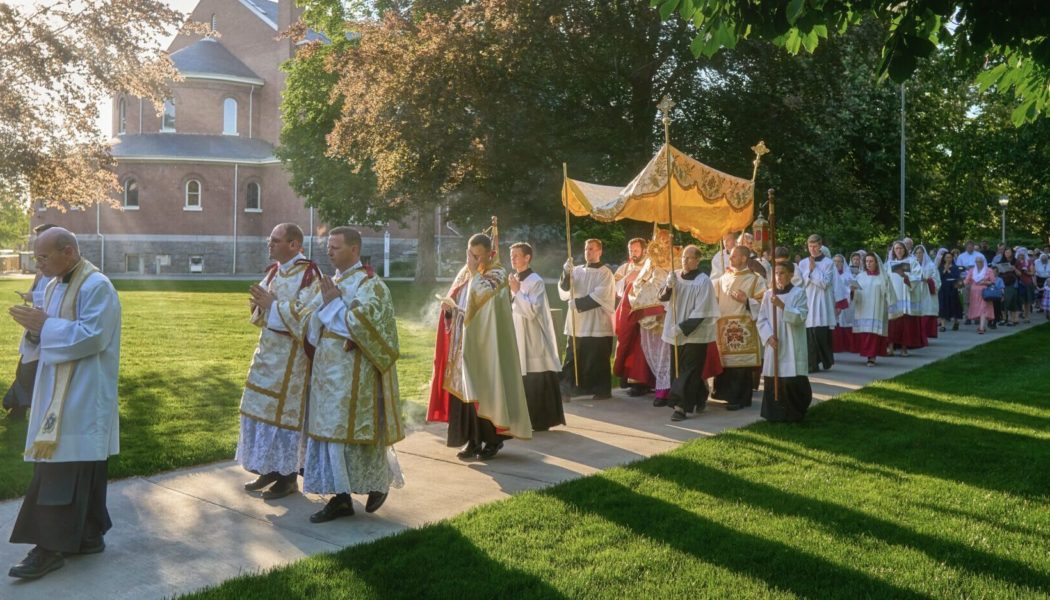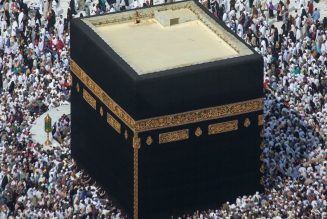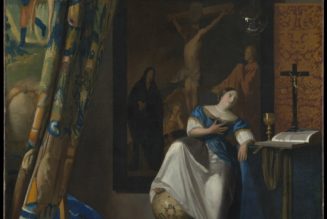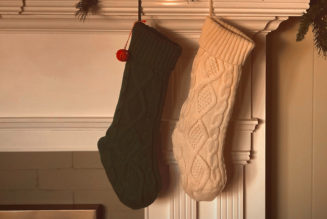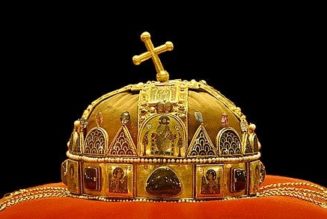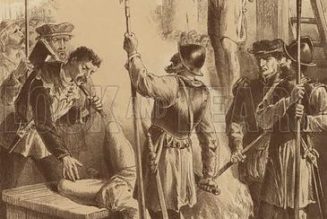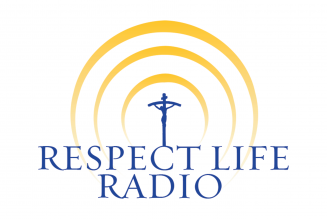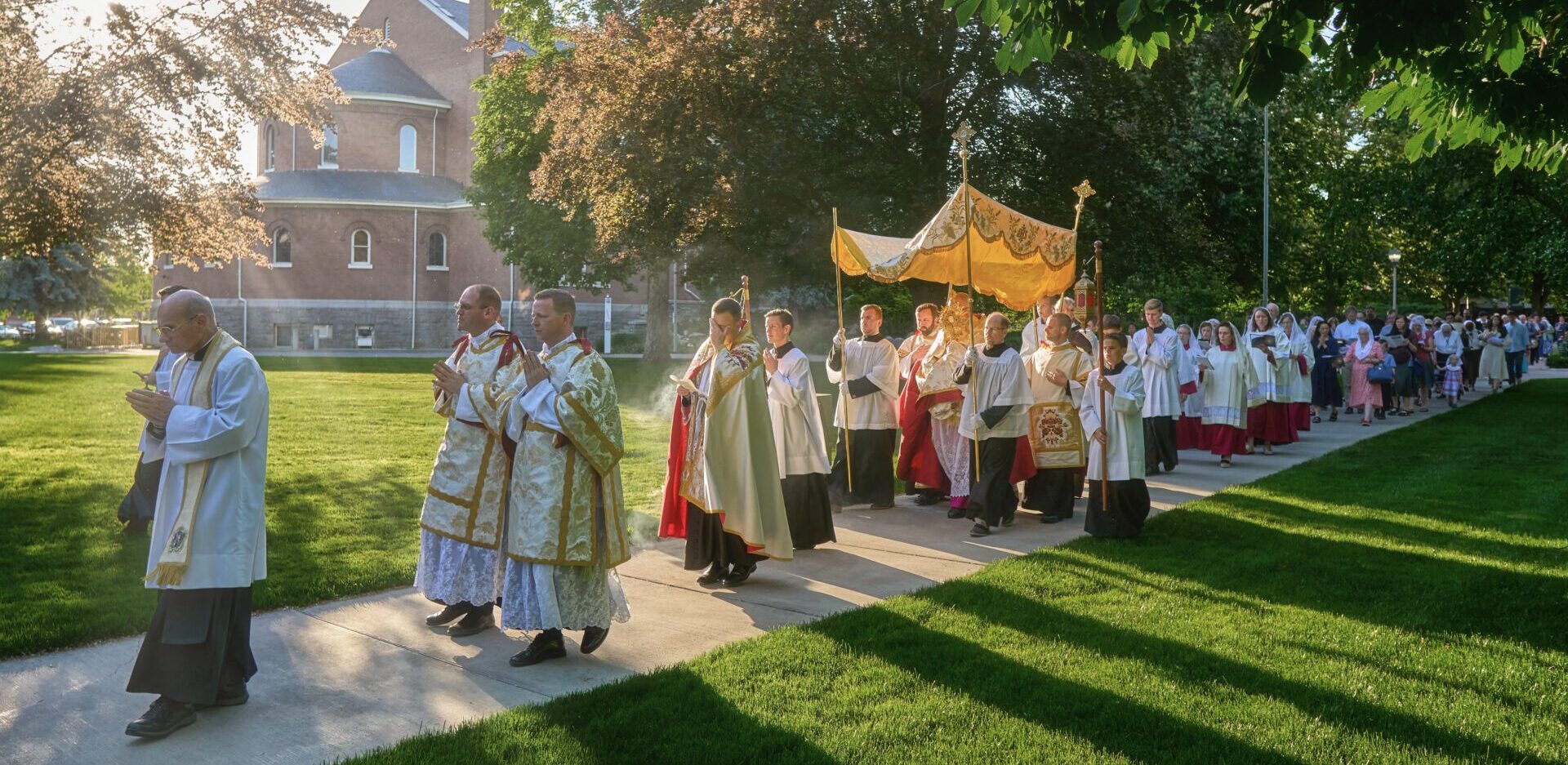
Dr. Lynne Bissonnette-Pitre is a psychiatrist, musician, schola director, and iconographer based in Portland, OR. For several years she had known the positive impact of goodness, truth, and beauty on mental health and well-being, but this knowledge rose to new heights in 2005.
After Pope Benedict XVI was elected, Bissonnette-Pitre started a schola, which drew the attention of listeners who wanted to know more about this audible artform. Bissonnette-Pitre responded to this interest by planning and conducting workshops on Gregorian chant. These explorations of the “how and why” of sacred song eventually became the Sacred Liturgy Conference (SLC).
The Sacred Liturgy Conference has been graced by the guidance of several outstanding Church leaders over the years. Cardinals, archbishops, monsignors, priests, religious, and laity have helped to unfold the richness of liturgical life to hundreds of participants.
Bissonnette-Pitre spoke with Adoremus correspondent Trent Beattie about this year’s conference in the Diocese of Santa Rosa, CA, June 4-7.
How did the Sacred Liturgy Conference come about?
When Cardinal Ratzinger became Pope Benedict XVI in 2005, several of us in Portland left St. Mary’s Cathedral choir to devote ourselves to learning Gregorian chant. We had read almost everything Cardinal Ratzinger had written on the liturgy and knew that he desired to retain or reintroduce Gregorian chant as the sacred music of the Church, so we formed a small schola and assisted at local Masses and retreats.
People who attended those Masses were intrigued by the beauty of the chanted liturgy and found that the otherworldly music made it easier for them to pray the Mass and to enter into a profound participation in the sacrifice of our Lord. This revelation led to requests for me to give chant workshops.
I then gave workshops on how to chant and included lectures on the history, structure, and meaning of chant in general, the essential nature of Gregorian chant in the liturgy, as well as the indispensable theology of the Eucharist.
Those original workshops then became what we know as the Sacred Liturgy Conference today?
By the year 2008, the faculty expanded and took on the shape of a conference, with more attendees and several speakers over the course of more than one day. Then there was all the food planning, hotel booking, and other things that grew organically out of that expansion.
The purpose of the workshops had always been to deepen our understanding and love for the tradition, sacred scriptures, and dogmas of the Catholic faith—and to experience the richness and beauty of the Church’s sacred liturgies. This continues to today in a more plentiful way with each conference.
A theme of the conference was chosen for each year as the focus for the lectures and liturgies. The themes have included: The Call of the Bridegroom, The Transfiguration, The Living Waters of the Eucharist, The Incarnation, and Holy Mary Mother of God in the Eucharist. The talks on these topics have illustrated the endless horizons of the perfections of God in his Church and his Holy Eucharist.
What is this year’s theme?
This year’s theme is “The Church on Fire in the Sacred Heart of Jesus.” The sacred liturgy is at the heart of the Church and is the source and summit of the life of the Church. Jesus has given us his Church, the Holy Eucharist, and the liturgy overall as gifts of his divine-human love.
All of these gifts flow from the Sacred Heart of Jesus, which is “the burning furnace of charity,” the source of all life in the Church. When we participate in the liturgy, we enter the burning furnace of love—the Sacred Heart of Jesus.
The fire of his love consumes all within us that is not of Christ and transforms us from glory to glory into his likeness (cf. II Corinthians 3:18). The Church, in turn, sets the world ablaze with the love and beauty of God and enriches civilization at large. In fact, the Church is the very instrument that makes true civilization possible.
Without the Sacred Heart of Jesus, there would be no Eucharist, and any religious liturgy—even if beautifully adorned—would be nothing more than dry and essentially lifeless formalities. Thus, we clearly see the indispensable nature of divine love touching otherwise loveless humanity to transform it into the very love shared among the Holy Trinity.
Who are some of the best-known past speakers from past conferences?
Over the years, the Sacred Liturgy Conference has hosted several outstanding speakers. Some include Cardinal Raymond Burke; Archbishop Salvatore Cordileone of San Francisco; Archbishop Alexander Sample of Portland, OR; Archbishop Edward Gullickson (retired Papal Nuncio to Sweden); and Bishop Athanasius Schneider of Astana, Kazakhstan.
Outstanding scholars who have graced our faculty include Msgr. Richard Huneger, Msgr. Andrew Wadsworth, Benedictine Father Cassian Folsom; Priestly Fraternity of St. Peter Father Gerard Saguto; Nathan Schmiedicke, PhD; Kevin Clarke, PhD; and Peter Kwasniewski, PhD.
Who are the headliners this year?
This year’s outstanding faculty includes Cardinal Gerhard Müller, former Prefect for the Doctrine of Faith; Msgr. Andrew Wadsworth, former Executive Director of ICEL [the International Commission on English in the Liturgy]; Father Ralph Weimann, STD, professor of theology at the Angelicum in Rome; Father Damian Higgins; Abbott of the Byzantine Catholic monastery of Mt. Tabor in California and an iconographer—and many other astute observers of and participants in the liturgy.
The 2024 conference faculty will help us to understand the Sacred Heart of Jesus from a liturgical perspective, a biblical perspective, a Thomistic perspective, and from tradition.
We’ll learn how to navigate the times when the Church seems to have been set aflame by worldly wildfires that, instead of providing light and love, have consumed the fragile faith of many souls and reduced it to ashes.
In these dark times of betrayal and persecution, we’ll learn more about the Eucharistic mission of the Holy Angels, the importance of overcoming evil through the sacramentals, the importance of sacred art and sacred music in the liturgy, and much more.
Anyone who wants to better understand the Sacred Heart of Jesus as the Heart of the Church, as the Heart of the Liturgy, as the Heart of Creation, and as our hiding place in dark times, should come to this year’s conference in Ferndale, CA.
Who are some of this year’s sponsors and how have they figured into genuine liturgical renewal?
Through the years, SLC has been supported by a diverse group of sponsors which include familiar names like EWTN and Ignatius Press, and a core group of individuals who donate generously, year after year.
This core group tells us that the SLC has changed their lives and brought them into a deeper love and reverence for the Holy Trinity. They look forward to coming every year, as we moved from Oregon to Washington to Montana and now, California.
Our sponsors and supporters hold in common the love for the Catholic Church and her rich tradition of visual and audible sacred art, theology, and liturgy. This is primarily expressed through the Roman Rite, but has also included the Byzantine rite.
We also have a small team of organizers who generously give, without remuneration, time and expertise for the mission at hand. We all believe it is the Sacred Heart of Jesus in his Eucharist that brings healing to souls individually and to entire nations.
You mentioned the Conference starting in Oregon and how it has made its way to California. What is the purpose of regularly changing venues?
The conferences have been held in different places in the northwestern US. The choice of places is determined by the invitation of the local Church and its bishop. This year, we have been graciously invited back to the Diocese of Santa Rosa, CA by Bishop Robert Vasa.
All the liturgies will take place at the historic Church of the Assumption in Ferndale, which was built in Gothic style, but from wood rather than stone. The conference talks will take place at a nearby conference center.
Moving the conference from diocese to diocese is an effective way of involving more people in this form of Eucharistic evangelization. Our variety of locales can even be thought of as a continuing Eucharistic procession: Our Lord leads and we adoringly follow him, catching the attention of onlookers who may see their salvation in a whole new way.
We just spoke of the sponsors, volunteers, and regular attendees, but there are many others who would not be able to attend or who would not have even known at all about the conference had we not kept moving it.
What have you learned about past events that you’re taking into this one?
In the early years of our annual conferences, we discovered that people yearn for goodness, truth, and beauty. Now, goodness has been promoted, more or less, in many places, but to get at the core of what goodness really is, truth and beauty are needed.
That’s where the SLC has filled a void. Many attendees had been “stranded” in parishes with little truth or beauty. This left their hearts with a profound sense of longing. They longed to know themselves and their true purpose, which is only found in a strong relationship with Christ through the fullness of faith in his Church.
Sacred beauty, which the Second Vatican Council and the Catechism have called for quite clearly, is interconnected with goodness and truth. In a Catechism subsection on the Eighth Commandment starting at 2500, truth is said to be beautiful in itself, and that genuine sacred art draws us to prayer and love of God, resulting in our own sanctification. God is infinite beauty, so it makes sense that we find our peace, not in the mundane happenings of this world, but in the heart of God.
Attendees have found truth and beauty—and of course, goodness—through the four days of our conferences. The combination of talks, the experience of the 4-5 beautiful traditional liturgies, the sacrament of reconciliation, and the shared fellowship is a highly welcomed immersion into the glory of God. And so we continue this as our format and pray that everyone is blessed during SLC 2024.
It is our prayer that these conferences contribute to the rejuvenation of Catholic faith and culture through love for the Eucharist. Our firm prayer is for the flourishing of this patrimony given to us by our Church fathers and for the world to know and love the goodness, truth, and beauty of Our Lord in his Holy Eucharist.
Catholic art—including statues, stained glass, painting, architecture, music, and literature—have all sprung from the beauty of Christ’s gift of himself to us through his Holy Eucharist. To this unsurpassed gift is owed the most profound reverence possible, and it is our joy to express this as well as grace allows, all the while inviting others to join in the celebration.
For more information on the 2024 Sacred Liturgy Conference, see https://sacredliturgy.org.
Image Source: AB/Sacred Liturgy Conference
